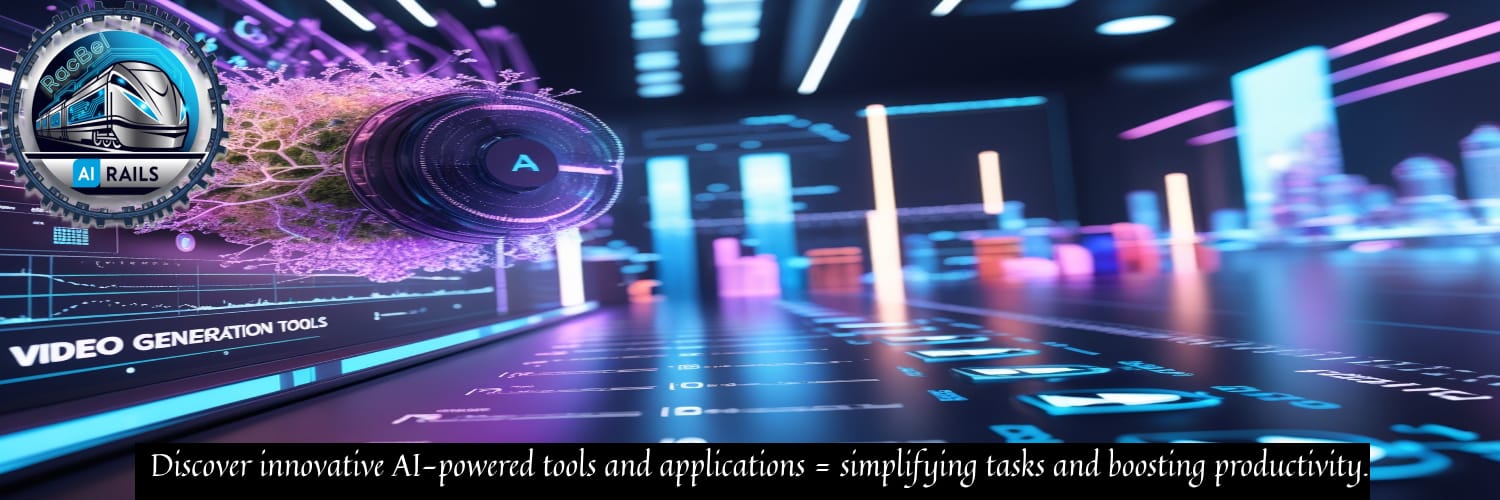The Evolution of AI Video Generators
AI video generators developed from basic tools for editing clips to advanced platforms that can create full videos from scratch.
The Evolution of AI Video Generators
The world of video creation is undergoing a remarkable transformation, thanks to the rise of AI video generators. Imagine crafting compelling visuals with just a few clicks or turning text into dynamic videos effortlessly. What was once confined to the realm of sci-fi and futuristic dreams is now an everyday reality for creators, marketers, and storytellers alike. These powerful tools are not only reshaping how we produce content but also redefining our understanding of creativity itself.
From simple animations to lifelike simulations, AI has come a long way in generating engaging videos that capture attention. As technology continues to advance at breakneck speed, it invites us all to rethink traditional methods of filmmaking and advertising. The captivating journey from early iterations to today’s sophisticated systems provides insight into where we’re headed next in this ever-evolving landscape. Buckle up as we delve deeper into the fascinating evolution of AI video generators!
Early forms of AI video generators
The journey of AI video generators began with rudimentary tools that primarily focused on animation and simple editing. Early systems relied heavily on predefined templates, which limited creativity. Users would input static images or text to create basic animated sequences.
As far as technology advance, the capabilities of these early generators get more powerful. Simple algorithms could stitch together clips from existing footage based on keywords or themes. This marked a significant shift in how content creators approached video production.
Early tools were less advanced than today’s, resulting in videos that often appeared choppy and disjointed. Nevertheless, they established a foundation for future innovations in the exciting field of artificial intelligence.
Experimentation was key during this period, as developers sought ways to enhance user experience while improving output quality. These efforts led to a growing interest in harnessing AI’s potential for more dynamic storytelling through visual media.
Advancements in AI technology and its impact on video generation
The landscape of AI technology has transformed dramatically over the past few years. With machine learning and neural networks at the forefront, video generation has become more sophisticated.
Algorithms can now analyze vast amounts of data quickly. This allows for seamless transitions and realistic animations that were once only possible through extensive manual work.
Text to video tools have emerged, enabling creators to generate videos directly from scripts. This innovation saves time and enhances creativity by offering visual inspiration with just a few clicks.
Image-to-video capabilities are also making waves in content creation. Users can take static images and turn them into dynamic stories, pulling viewers into engaging narratives without requiring advanced editing skills.
These advancements not only streamline production processes but also democratize video creation, allowing anyone with an idea to bring it to life effortlessly.
The rise of fake videos and their ethical implications
Deepfake technology has dramatically changed the landscape of video generation. It allows for hyper-realistic manipulation, creating videos that can make a person appear to say or do anything. This capability raises significant ethical questions.
The potential for misuse is alarming. From spreading misinformation to defaming individuals, deepfakes can easily cross the line from entertainment into harmful territory. The ability to fabricate real-seeming events blurs the lines of trust in media.
On one hand, this innovation showcases advancements in AI video generators; on the other, it poses serious risks to personal privacy and societal integrity. As more people become aware of deepfakes’ existence, skepticism towards legitimate content grows.
Navigating this technological evolution requires vigilance and responsibility. Developers must consider ethical guidelines during creation processes to mitigate negative impacts while harnessing creativity through AI-generated visuals.
How AI video generators are changing the film and advertising industry
AI video generators are revolutionizing the film and advertising industries in remarkable ways. Filmmakers now harness cutting-edge technology to create visual content at an unprecedented speed. This allows for rapid prototyping of scenes, enabling creative teams to experiment without the traditional resource constraints.
In advertising, brands leverage AI-generated videos to personalize messages for their audiences. By using data-driven insights, companies can produce tailored content that resonates with viewers on a deeper level. The result? Higher engagement rates and improved conversion metrics.
Moreover, these tools democratize creativity. Aspiring filmmakers can access sophisticated capabilities previously reserved for big studios. With just text or images, anyone can generate compelling narratives and visuals.
As AI continues to evolve, the boundaries between human creativity and machine assistance blur further. This fusion opens doors to innovative storytelling techniques that challenge conventional norms in both industries.
Limitations and challenges of AI video generators
AI video generators are impressive, yet they face significant limitations. Quality can vary widely. Sometimes the outputs lack coherence or realism, making them unsuitable for professional use.
Another challenge is the need for vast amounts of data to train these systems effectively. Without diverse datasets, the videos may exhibit biases or inaccuracies that could mislead viewers.
Technical constraints also play a role. Rendering high-quality video requires substantial computing power and time. This can be a barrier for smaller creators or businesses with tight budgets.
Furthermore, issues surrounding copyright and intellectual property arise frequently in this space. Who owns the generated content? Clarity on these matters remains murky, complicating its commercial application.
Ethical considerations loom large as well. The potential misuse of AI-generated videos raises concerns about misinformation and authenticity in media consumption today.
Future possibilities and potential developments in AI video generation technology
The future of AI video generation is brimming with potential. Imagine a world where text-to-video capabilities become seamless, transforming words into dynamic visuals in real-time. This could revolutionize content creation for educators and marketers alike.
Advancements might also lead to more intuitive image-to-video transitions. By simply uploading an image, users could generate entire scenes or narratives that bring still pictures to life.
As machine learning continues to evolve, personalization will reach new heights. Audiences may soon receive tailored videos that resonate on a deep emotional level based on their preferences.
Another exciting possibility lies in virtual reality integration. AI-generated videos could create immersive experiences that transport viewers into entirely new worlds, enhancing storytelling like never before.
These innovations hold the promise of redefining creativity and collaboration between humans and machines in unprecedented ways.
The role of humans in the evolution of AI video generators
The evolution of AI video generators highlights the unique relationship between technology and human creativity. While machines can now create compelling visuals from text or images, they still rely heavily on human input for context, emotion, and storytelling.
Humans are essential in guiding these tools to ensure they align with our values and intentions. As we continue to explore the potential of video generation through AI, it’s crucial that we maintain a balance between innovation and ethical considerations. The future will likely see more sophisticated tools that enhance creative output while demanding responsible usage.
Creativity will always thrive at the intersection of technology and humanity. As we embrace advancements like text-to-video or image-to-video capabilities, let’s not lose sight of what makes us uniquely human: our ability to think critically and ethically about how these technologies shape our narratives.The evolution of AI video generators is truly fascinating. Just think about how far we’ve come from simple tools to amazing technology that can turn text to video or even image to video! However, as we dive deeper into this exciting world, it’s important to remember that these tools are only as good as the humans behind them. We need to think critically and ethically about how we use these video generators. Balancing creativity with responsibility will help ensure that our narratives reflect our values and intentions. The future holds even more incredible advancements, but it’s up to us to guide their use in a way that is thoughtful and caring.
…………………………………………………………………………………………
Categories and examples of AI Video Generators
AI video generators can be categorized based on their functionality and use cases. The primary categories include:
Text-to-Video Generators:
Template-Based Generators:
AI-Powered Video Editors:
Deepfake and Synthetic Media Generators:
Interactive Video Generators:
1.Text-to-Video Generators
These tools convert written text into video content. They analyze the text, generate relevant visuals, and often include voiceovers and animations.
Synthesia: A leading platform that allows users to create videos from text inputs. It uses AI avatars and multilingual voiceovers to produce professional-quality videos.

Pictory: This tool converts blog posts and articles into engaging videos by extracting key points and pairing them with rele&vant visuals.

Lumen5 :Turns blog posts or text into video content with animations, stock footage, and music. Use Case: Marketing and social media campaigns.

Elai.io : Generates videos from text using AI avatars and customizable templates.Use Case: Educational content and product demos..

Designs.ai : Offers a text-to-video feature with AI-generated voiceovers and visuals.Use Case: Marketing and branding.

InVideo: Known for its extensive library of templates, InVideo enables users to create videos for various purposes, including ads, presentations, and tutorials.

Luma AI: Specializing in generating videos from images, Luma AI is ideal for creating animations, visual effects, and video edits. Luma AI generating a video from a single image

2. AI-Powered Video Editors
These platforms provide pre-designed templates that users can customize with their own text, images, and videos. AI assists in optimizing the layout, transitions, and timing.
Runway ML: A versatile tool that combines video editing with AI-powered features like green screen removal, motion tracking, and style transfer.

Adobe Premiere Pro: Integrates AI tools like Auto Reframe and Scene Edit Detection for faster editing. Use Case: Professional video production.

FlexClip : An AI-powered video editor with templates, voiceovers, and automatic editing features. Use Case: Marketing and personal projects.

Veed.io : Offers AI tools for auto-subtitles, background removal, and video resizing. Use Case: Social media and quick video edits.

Magisto: This platform uses AI to analyze raw footage and automatically generate edited videos with music, effects, and transitions.

3. Template-Based Video Generators
These tools enhance traditional video editing by automating tasks like cutting, trimming, and adding effects. They also offer features like scene detection and automatic color grading.
Animoto: A user-friendly platform that offers customizable templates for creating marketing videos, slideshows, and social media content.

Renderforest :Provides templates for animations, explainer videos, and promotional content. Use Case: Startups and branding.

Wave.video :Combines video editing with templates for social media, ads, and blogs. Use Case: Content marketing.

Promo.com :Specializes in creating promotional videos using templates and stock footage. Use Case: Advertising and social media.

Runway ML: (Real-Time Features): Offers real-time video editing and effects using AI. Use Case: Creative projects and live performances.


4. Deepfake and Synthetic Media Generators
These tools use AI to create hyper-realistic videos by superimposing faces or altering existing footage. They are often used in entertainment but raise ethical concerns.
DeepBrain: Specializes in creating AI-generated avatars and deepfake videos for corporate training, marketing, and entertainment.

D-ID: Known for its ability to animate still images and create talking-head videos using AI.

Vyond : Specializes in animated video creation for training and presentations. Use Case: Corporate training and storytelling.

Imagine.art : All-In-One Studio for Image generation, AI Editing & videos, shorts, and dub videos with AI—fast and seamless.Explore
Use Case: Social media and content repurposing.

Descript : Combines video editing with AI-powered transcription and voice cloning. Use Case: Podcasts and video editing.

Steve.ai : Creates animated videos from text inputs using AI. Use Case: Marketing and explainer videos.

5. Interactive Video Generators
These platforms create videos that adapt based on user input or behavior. They are commonly used in marketing and e-learning.
Eko: A platform that creates interactive videos for storytelling, marketing, and education. Users can choose their own path within the video.

Wirewax: Offers tools for adding interactive elements like clickable hotspots, quizzes, and branching scenarios to videos.

Hihaho :Enables interactive video creation with annotations, links, and overlays. Use Case: Training and marketing

Rapt Media: :Creates interactive video experiences for marketing and storytelling. Use Case: Brand engagement.

Klynt : A tool for creating interactive documentaries and multimedia stories. Use Case: Education and journalism.

6. AI Tools for Specialized Video Creation
These tools focus on specific aspects of video production, such as animation or voiceovers.
Toonly: Creates animated explainer videos using drag-and-drop tools. Use Case: Marketing and education.

StreamYard : Combines live streaming with AI-powered features like captions and overlays. Use Case: Live events and webinars.

7. AI Tools for Video Enhancement
These platforms use AI to improve video quality or add effects.
Topaz Video Enhance AI: Upscales and enhances video resolution . Use Case: Restoring old footage and improving video quality.

DeepMotion : Creates 3D animations and motion graphics from video inputs. Use Case: Gaming and animation.

Remove.bg (for Video) : Removes video backgrounds automatically using AI. Use Case: Video editing and green screen effects.

Unscreen : Automatically removes backgrounds from videos without a green screen. Use Case: Video editing and presentations.

Vidnami : Uses AI to create videos from text, with automatic voiceovers and visuals. Use Case: Marketing and social media.

Vmake.ai : Enhance, Remove, and Transform powerful Tools for Creators to edit Videos. Use Case: Marketing and social media.

8. AI Tools for Real-Time Video Generation
These tools generate videos in real-time or based on live inputs.
Synthesia: A leading platform that allows users to create videos from text inputs. It uses AI avatars and multilingual voiceovers to produce professional-quality videos.





Leave a Reply